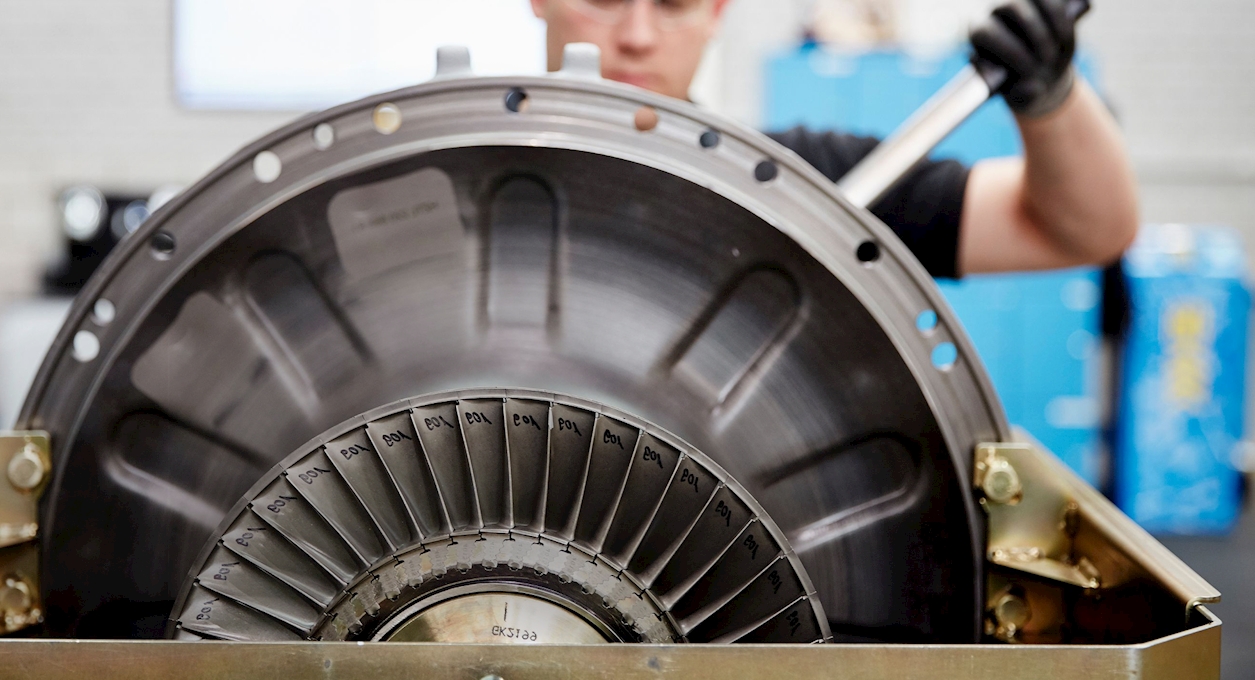
Turbocharger: what affects the life of the turbines and leads to their breakdowns
There is no node in the car that is more demanding on lubrication than a turbocharger (TKR). The turbine rotor, depending on the mode of operation of the motor, can rotate at a speed of tens or even hundreds of times greater than the crankshaft speed. In order to avoid semi-dry friction and accelerated wear of rubbing parts, the oil must not only be supplied to the rotor bearings under high pressure, but also be of high quality.
In addition, the oil entering the cartridge, as the bearing housing is called, is also a coolant, because the turbine is very hot during operation by the exhaust gases. This means that the oil must be resistant to thermal loads and retain lubricity for a long time under their influence. This is the second reason why for turbocharged engines, whether old or new, liberties with the choice of oil for maintenance are unforgivable. No matter how high the mileage, the requirements for oil have not changed! What is indicated in the operating instructions regarding the viscosity (SAE index) and performance characteristics (API and ACEA) of the oil being poured should be taken into account when buying it, and the savings on purchasing a cheap product that does not meet factory tolerances will go sideways to the turbocharger.
However, even if the oil is suitable, over time, wear products from all friction points in the engine accumulate in it, as well as soot and deposits. Dirt lingers in the oil receiver and oil filter. To be sure of the condition of the oil receiver, it is sometimes worth removing the oil pan. When the oil filter is clogged with debris, a special valve opens, which, in order to prevent oil starvation and semi-dry friction, passes crude oil straight to the turbine bearings. The same thing happens when the oil is too viscous. Until the engine warms up to a certain temperature, the oil is not filtered, but is directed past the filter through the bypass valve.
This situation requires that the oil filter, along with the oil in turbocharged engines, be changed at a shorter interval compared to conventional engines. The frequency of replacement, according to many experts, should be no less than 7-8 thousand km. Of course, an oil filter, like oil, must be of high quality, not cheap, with dubious suitability for use.
Too viscous oil in itself does not enter the cartridge well, even with a fully functional filter. To avoid delays in lubrication, oil starvation and semi-dry friction in the bearing assembly, the driver must refrain from sudden acceleration of the car and driving in forced modes until the engine is fully warmed up.
Oil starvation is one of the most common causes of premature TKR failure. It occurs when insufficient oil is supplied to the cartridge and at too low a pressure for proper operation of the rotor plain bearings. Its sign is the blueness of the rotor shaft, or, as they say in such cases, the appearance of tint colors on the shaft. It’s a pity, but you can see this only after disassembling the faulty turbine.
In engines with high mileage, the problem of starvation can be created by the oil pump, a malfunction in its drive, or even an oil receiver mesh clogged with sludge. Contribute to oil starvation leaks, for example, due to the fact that the fitting on the oil supply to the cartridge is underpressured. Also, the passage hole in the oil supply tube may become smaller due to deposits of carbon deposits inside or because the tube has been bent. The tube may be normal, but the mesh filter that may be in it is clogged with dirt.
Theoretically, only the wear of the bearing bushes and the rotor shaft associated with them should regulate the life of the turbocharger. However, the practice of car services specializing in the repair of TKR shows that in by no means isolated cases, the failure of the main unit of the turbocharging system is caused by abrasive wear of the turbine and compressor wheel blades and even their mechanical deformation.
The turbine wheel can be damaged by something that has flown in from the cylinders, such as pieces of valve seats. It happens that fragments of collapsed air dampers that were pulled into the cylinders from the intake manifold get to the turbine. It happens that the exhaust manifold cracks with the formation of fragments.
Finally, hard deposits can form in the exhaust manifold, pieces of which then fall off and fly into the turbine. However, for coke to appear, some conditions are required! Contribute to the increased formation of soot, which turns into coke, problems with fuel combustion. The reasons can be different, from malfunctions in the power and ignition systems to the use of low-quality fuel. And high oil consumption for waste, for example, due to wear of piston rings or valve stem seals, again does not bode well for TKR.
Carbon formation has three more negatives positive consequences for the turbocharger. Firstly, due to carbon fouling, the blades begin to wedge and often completely lose their mobility in the guide vane of variable geometry turbines, which makes them faulty.
And the same thing can happen to the valves that regulate boost pressure.
Secondly, the resulting soot is deposited on the sealing lips of the rotor. It is a labyrinth type, consists of several metal rings. After the seal fails, the cartridge begins to leak, and the oil from it enters the turbine and compressor.
Thirdly, the catalyst and the particulate filter are clogged with soot. It would seem, so what? The problem is the appearance of significant resistance to the free exit of exhaust gases from the turbine.
When a hindrance appears, the gases begin to put pressure on the turbine wheel, after which the thrust part of the wheel wears out intensively, and then a longitudinal play appears at the rotor, which should not be.
This usually causes leaks, but it often comes to the point that the compressor wheel, located on the opposite side of the rotor, shifts, begins to cling to the body of its own “snail” with its blades, grind off and even break off.
Other causes of damage to the compressor wheel blades, as well as the guide vanes of the geometry change mechanism, are abrasive wear and foreign objects. These parts are worn out by dust that has slipped past the air filter, for example, through a loose fastening of some clamp on the inlet pipe or through cracks in the air filter housing or on the air duct between the filter and the TKR. This leads to the suction of uncleaned air.
And foreign objects are, as a rule, fragments of the air filter, which can delaminate and tear from moisture, untimely replacement, and also due to poor workmanship. Therefore, the air filter should be treated with the same respect as the oil filter. And of course, you can not ignore any whistle or other extraneous sound that has arisen in the intake tract area. The sooner you find out its cause, the better. However, this applies to all engine problems that affect the TKR. To protect the turbocharger from premature death, do not delay with their elimination.
Other breakdowns are possible, but they can hardly be called typical. In most cases, corrosion is the cause of these problems, but it takes a fair amount of time for it to cause damage to the actuator bodies or jamming of their stems. And, of course, the TKR can be damaged as a result of an accident.
Do I need to turn off the engine immediately after stopping the car? It will not be bad if he idles a little. This will reduce the speed of rotation of the rotor, which, after stopping, will have to spin by inertia, which will reduce the time when its bearings remain on a starvation oil solder due to the fact that the oil pump will stop working along with the engine.



